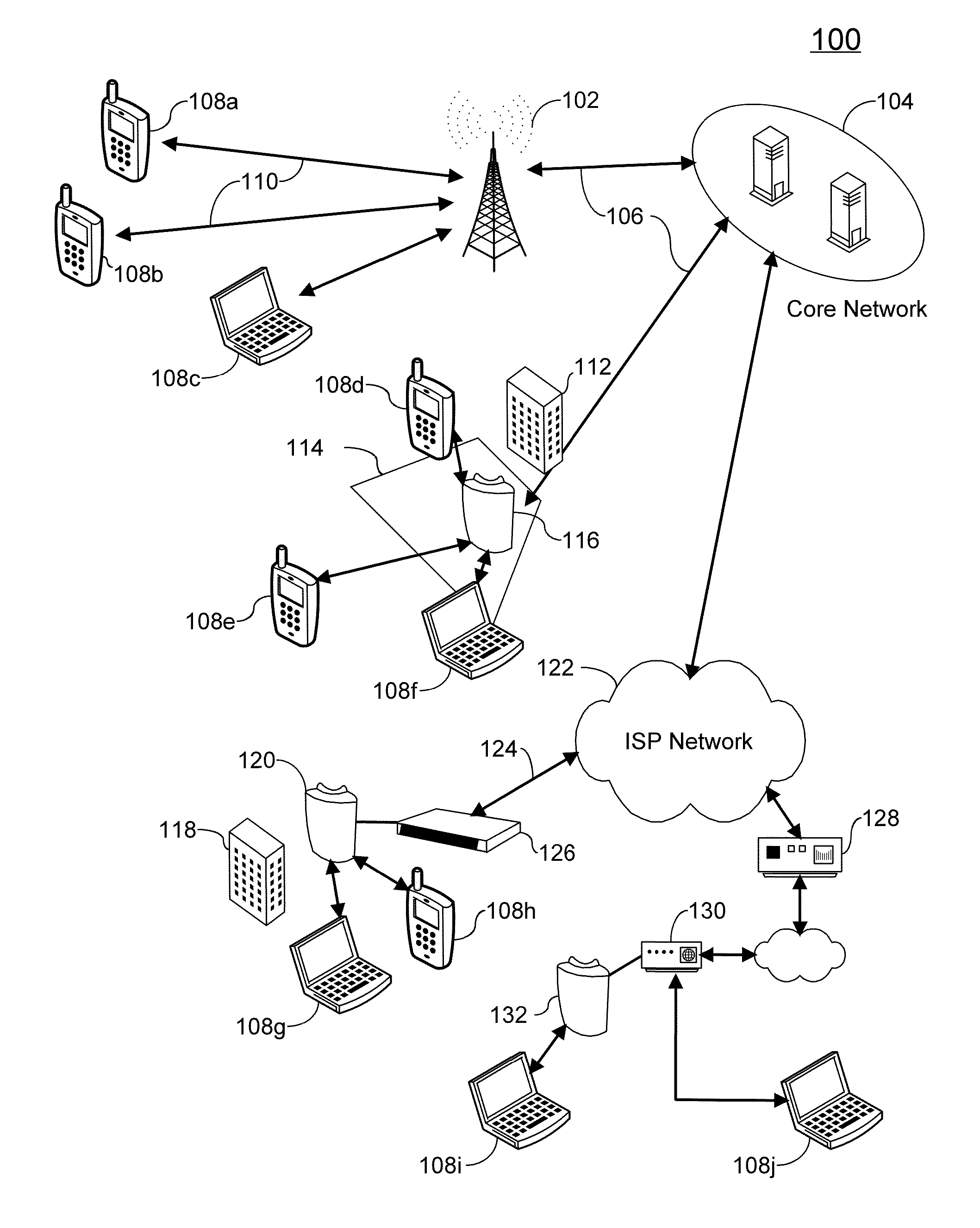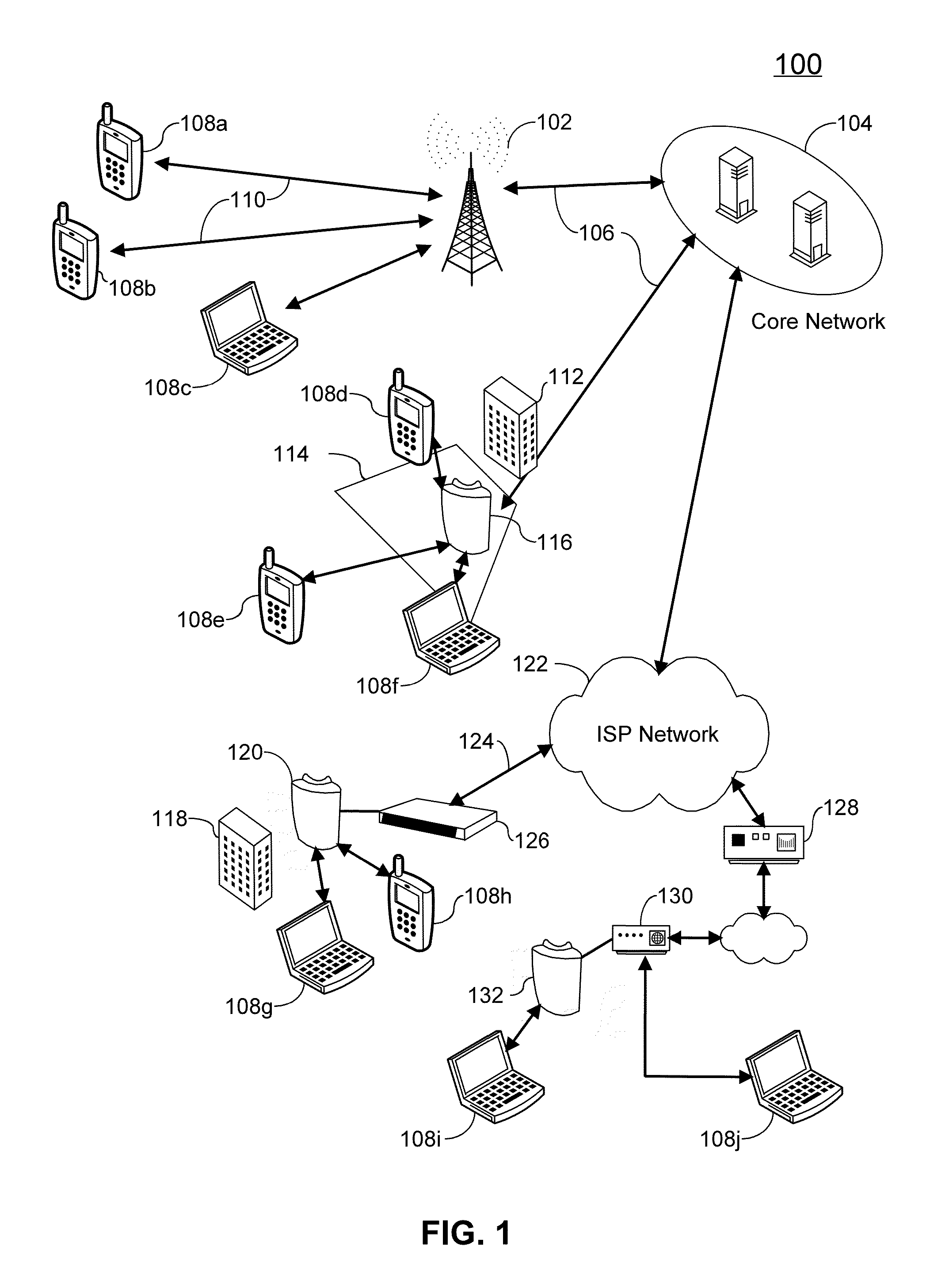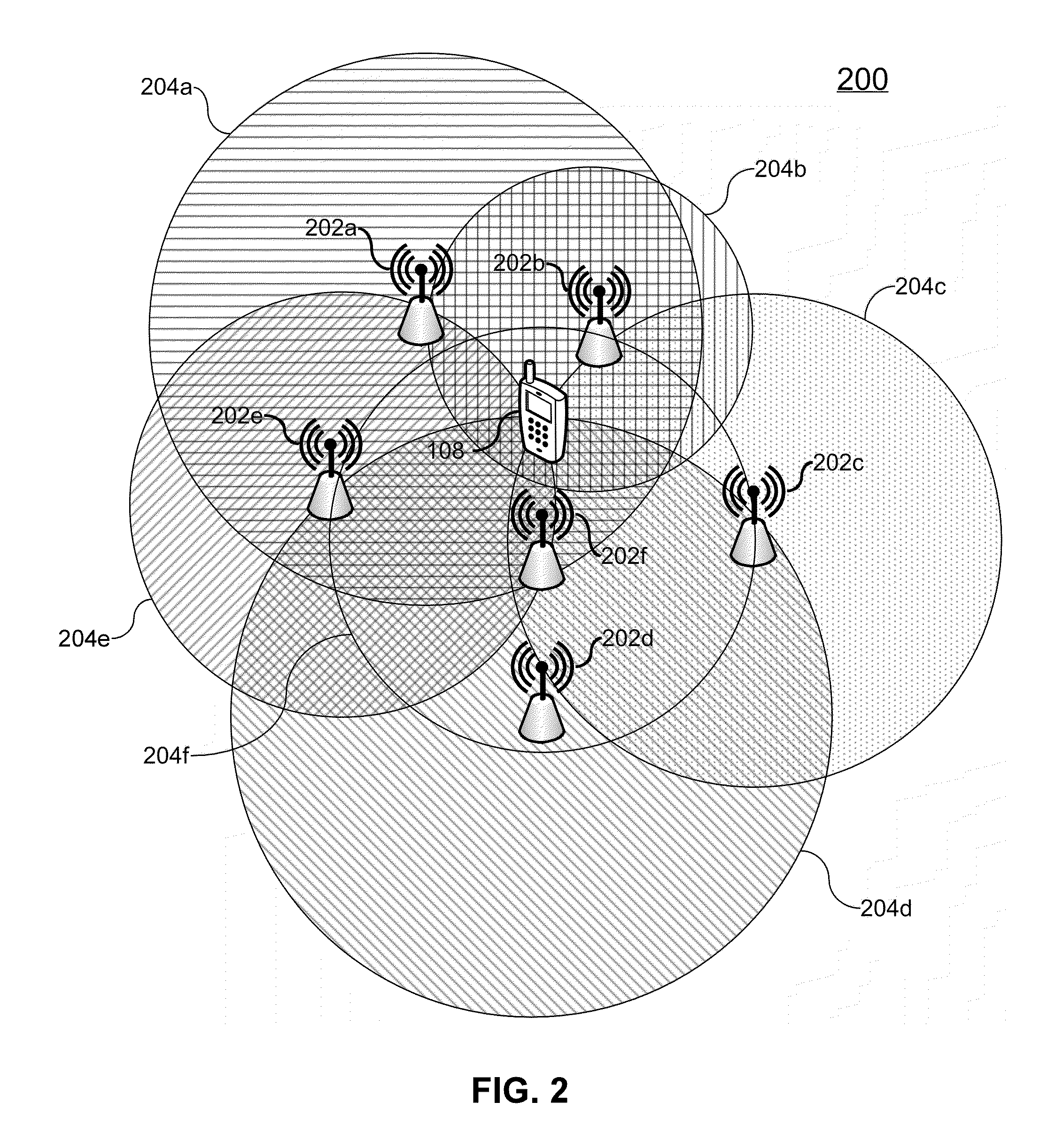Network selection recommender system and method
a network selection and recommender technology, applied in the field of wireless network access systems, can solve problems such as rogue aps, face problems, and aps may not be appropriate, and achieve the effect of reducing the number of aps, and improving the quality of aps
- Summary
- Abstract
- Description
- Claims
- Application Information
AI Technical Summary
Benefits of technology
Problems solved by technology
Method used
Image
Examples
first embodiment
[0053]A recommender system is described herein to solve the problem of AP selection. An example recommender system 300, comprising several parts, is illustrated in FIG. 3. The lines between the parts are intended to illustrate the main interfaces between these parts, but they are not exhaustive. In the exemplary description that follows further details are given. For instance, the “AP feature values collector” may interface a Global Positioning System (GPS) receiver, a local database, or even a remote database accessed via the Communication Module. Also, the interface between the “AP selector” and an external system that makes use of the recommender system is not shown in the figure.
[0054]One embodiment of a recommender system 300, shown in FIG. 3, comprises a network device 302 (e.g., a server, a router, a gateway, an AP, etc.) and one or more UEs 108. The network device 302 comprises a communication interface 304, a sample storage 306 and a model generator 308. The network device ...
second embodiment
[0251]Another embodiment of the present disclosure is illustrated in FIG. 8. Recommender system 800 is similar to recommender system 300; however, certain key components of the system have been relocated from the UE 801 to the network device 802 to reduce the processing and storage requirements for the UE 801. The network device 802 (such as a server, gateway, AP, router etc.) includes a sample storage 806, a model generator 808 and a communication interface 804 which function in the same manner as their counterpart components functioned in recommender system 300 described above. Network device 802 also includes a sample generator 810, an AP feature values collector 816 and an AP selector 820. These components function similarly to their counterpart components of recommender system 300 but for operational changes necessary to accommodate for the location change. Additionally, the network device 802 has an interface 824, such as a backhaul interface, to enable communications with APs...
PUM
 Login to View More
Login to View More Abstract
Description
Claims
Application Information
 Login to View More
Login to View More - R&D
- Intellectual Property
- Life Sciences
- Materials
- Tech Scout
- Unparalleled Data Quality
- Higher Quality Content
- 60% Fewer Hallucinations
Browse by: Latest US Patents, China's latest patents, Technical Efficacy Thesaurus, Application Domain, Technology Topic, Popular Technical Reports.
© 2025 PatSnap. All rights reserved.Legal|Privacy policy|Modern Slavery Act Transparency Statement|Sitemap|About US| Contact US: help@patsnap.com



